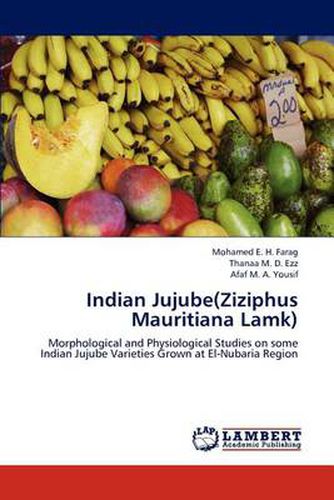Readings Newsletter
Become a Readings Member to make your shopping experience even easier.
Sign in or sign up for free!
You’re not far away from qualifying for FREE standard shipping within Australia
You’ve qualified for FREE standard shipping within Australia
The cart is loading…






This title is printed to order. This book may have been self-published. If so, we cannot guarantee the quality of the content. In the main most books will have gone through the editing process however some may not. We therefore suggest that you be aware of this before ordering this book. If in doubt check either the author or publisher’s details as we are unable to accept any returns unless they are faulty. Please contact us if you have any questions.
Ber or Indian jujube is belongs to the family Rhamnaceae that consists of 45 genera and 550 species. It is widely distributed in tropical and sub-tropical climates in the world. Ber can be successfully cultivated even in the most marginal lands of the tropics and subtropics with few agriculture inputs and little attention. The tree propagates freely and resists stress conditions in regions experiencing recurrent droughts. It is suitable to rehabilitate the vast resource-poor regions of the tropics and subtropics and is thus an important tree for integration into the agroforestry systems in the warm desert ecoregions. The tree can provide economic sustenance to the region and insurance against ecological degradation. The Indian jujube trees are ever green and vigorous grower and have a rapidly developing tap root system within a short period. The Indian jujube has different names in different languages of the world there are in Arabic; Aunnabe Hindi, Nabig and Sidr; in English; ber, Chinese Date, Indian Cherry, Indian Jujube, Indian Date and Indian Plum; In French; Chicourlier, Croc de chien, Epine a cerises, Guin-doulier, Jujubier, and Massonier; In Hindi, Baer, Ber and Beri.
$9.00 standard shipping within Australia
FREE standard shipping within Australia for orders over $100.00
Express & International shipping calculated at checkout
This title is printed to order. This book may have been self-published. If so, we cannot guarantee the quality of the content. In the main most books will have gone through the editing process however some may not. We therefore suggest that you be aware of this before ordering this book. If in doubt check either the author or publisher’s details as we are unable to accept any returns unless they are faulty. Please contact us if you have any questions.
Ber or Indian jujube is belongs to the family Rhamnaceae that consists of 45 genera and 550 species. It is widely distributed in tropical and sub-tropical climates in the world. Ber can be successfully cultivated even in the most marginal lands of the tropics and subtropics with few agriculture inputs and little attention. The tree propagates freely and resists stress conditions in regions experiencing recurrent droughts. It is suitable to rehabilitate the vast resource-poor regions of the tropics and subtropics and is thus an important tree for integration into the agroforestry systems in the warm desert ecoregions. The tree can provide economic sustenance to the region and insurance against ecological degradation. The Indian jujube trees are ever green and vigorous grower and have a rapidly developing tap root system within a short period. The Indian jujube has different names in different languages of the world there are in Arabic; Aunnabe Hindi, Nabig and Sidr; in English; ber, Chinese Date, Indian Cherry, Indian Jujube, Indian Date and Indian Plum; In French; Chicourlier, Croc de chien, Epine a cerises, Guin-doulier, Jujubier, and Massonier; In Hindi, Baer, Ber and Beri.